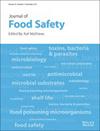Control Architecture Model in Mobile Robots for the Development of Navigation Routes in Structured Environments
Journal of Rapid Methods and Automation in Microbiology
Pub Date : 2019-01-01
DOI:10.4018/978-1-4666-2658-4.CH005
引用次数: 0
Abstract
Robotic navigation applies to multiple disciplines and industrial environments. Coupled with the application of Artificial Intelligence (AI) with intelligent technologies, it has become significant in the field of cognitive robotics. The capacity of reaction of a robot in unexpected situations is one of the main qualities needed to function effectively in the environment where it should operate, indicating its degree of autonomy. This leads to improved performance in structured environments with obstacles identified by evaluating the performance of the reactive paradigm under the application of the technology of neural networks with supervised learning. The methodology implemented a simulation environment to train different robot trajectories and analyze its behavior in navigation and performance in the operation phase, highlighting the characteristics of the trajectories of training used and its operating environment, the scope and limitations of paradigm applied, and future research.面向结构化环境下导航路径开发的移动机器人控制体系模型
机器人导航适用于多学科和工业环境。再加上人工智能(AI)与智能技术的应用,在认知机器人领域具有重要意义。机器人在突发情况下的反应能力是机器人在其应操作的环境中有效运行所需的主要品质之一,表明其自主程度。这导致在结构化环境中的性能得到改善,这些环境中存在障碍,通过评估反应性范式在应用具有监督学习的神经网络技术下的性能来识别。该方法通过仿真环境来训练不同的机器人轨迹,并分析其导航行为和操作阶段的性能,突出了所使用的训练轨迹及其操作环境的特点,所应用范式的范围和局限性以及未来的研究方向。
本文章由计算机程序翻译,如有差异,请以英文原文为准。
求助全文
约1分钟内获得全文
求助全文

 求助内容:
求助内容: 应助结果提醒方式:
应助结果提醒方式:


